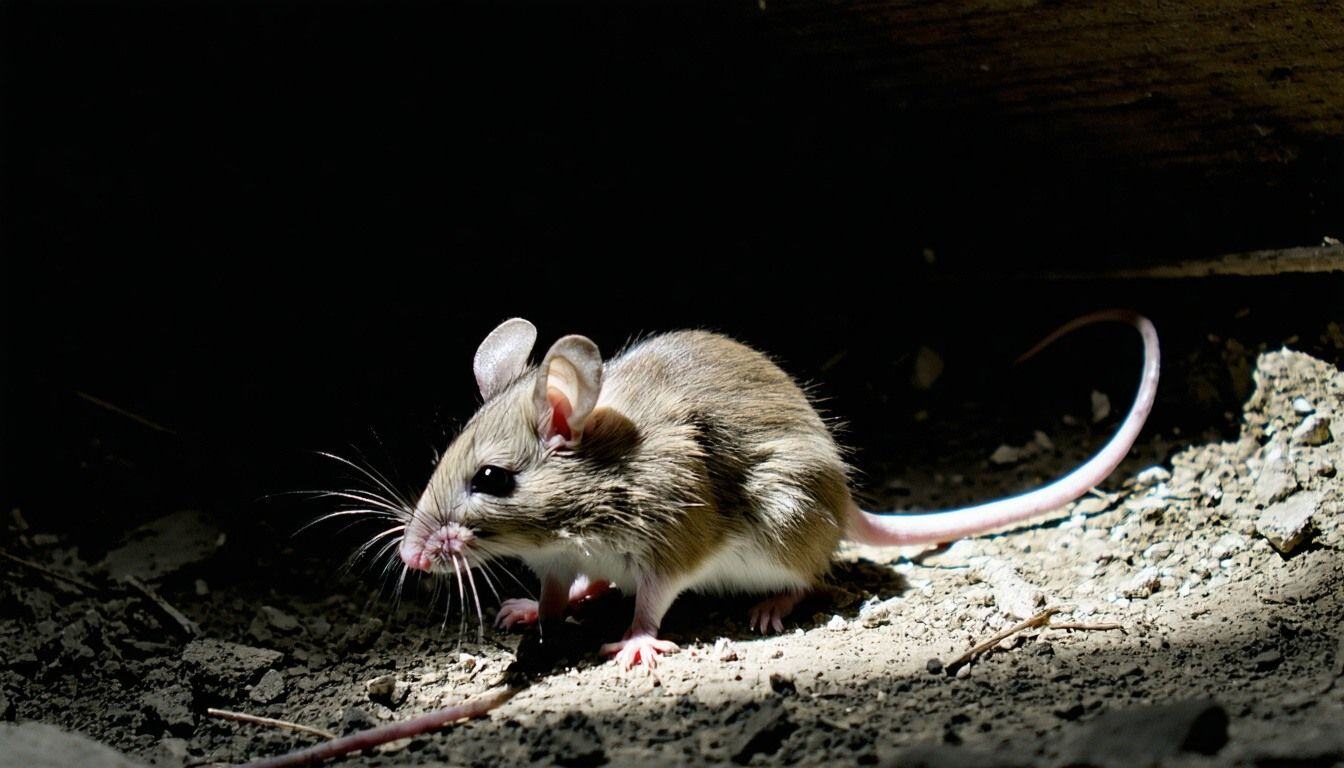How Much Rodent Poop is in Your Attic?


Do you hear scratching noises in your attic?
The good news is it’s not a ghost, but there is definitely something living up there. You likely have an animal living in your attic and trust me, it didn’t remodel up there to make room for a bathroom.
RetroFoam of Michigan has insulated thousands of attics over the past decade, and we’ve removed our fair share of soiled insulation from those attics before we can install the foam. It’s a dirty job, even without any rodent poop, but it’s one we have to do for you to get the best insulation in there.
Let’s get down to the nitty-gritty and talk about the specifics about rodent poop in your attic.
What Happens When You Have an Animal in the Attic
No one wants to hear they have something living in their attic, but if they can get in, mice, squirrels, and bats will make a home up there.
If you have traditional insulation, those same pests are using that fiberglass or cellulose to make little nests, which is just the beginning of the problems you could face.
If you have a rodent problem in your attic, the first thing you need to do is evict them. You can either trap them yourself or call in the professionals. The real problem is the mess they leave behind.
Mice eat a lot to keep their little bodies moving. This means they also have to poop a lot. Adult lab mice can defecate between .25 grams to 1 gram a day, according to Live Science. That means even the smallest mouse infestation in your attic can produce literally thousands of dropping in a short span of time. If one mouse is responsible for 50 to 75 droppings a day, think how many dozens of mice could leave.
Bats aren’t much better as they relieve themselves around 20 to 30 times a day, according to Animals in Your Attic. It only takes a bat about 20 minutes or less to digest its food.
Now you have to do something with the huge mess on your hands.
When you start cleaning, it’s important to be careful when handling rodent excrement, according to the Center for Disease Control.
Here are the recommendations from the CDC:
- Wear rubber, latex, or vinyl gloves when cleaning up the urine and droppings.
- Spray the droppings with a disinfectant or bleach mixture and let soak for 5 minutes.
- Use a paper towel to pick up the droppings and throw them away in a garbage bag.
- After the droppings have been removed, disinfect any items the rodents might have come in contact with.
How Do Rodents Get in the Attic?
If there is even the tiniest crack in your home, you’ve basically given the rodents an invitation to move in.
It’s not your fault though.
Sometimes they are openings so small, you don’t even know they are there, but that’s all it takes. Pests will find the areas where they can feel the air coming out of your home and make their way in.
This doesn’t just apply to an opening in your attic, this can be anywhere in your home.
The best thing to do is when you find these kinds of gaps and cracks to fill them immediately. It’s also important not to have an insulation that can also serve as nesting material.
Fiberglass and cellulose are the best materials for rodents to make a home out of, whereas foam insulation isn’t inviting at all because it isn’t a food source or inviting as a nesting material. The second benefit of spray foam is that it will fill up and block off all of those openings rodents are looking for.
How Insulation Can Help
After solving the rodent problem and cleaning up the mess, you have two options to fix the insulation.
You can add more traditional insulation back into the area, which if they find a way back in will happen all over again, or remove all the old insulation completely and start over with foam insulation.
These critters are looking for air leaks in your home, which gives them an idea of where they can get in at.
Foam insulation doesn’t deter pests, but it does seal up those small cracks that rodents like to squeeze in through. The added benefit of this air seal is that it not only close those openings, it also helps reduce the air leakage you experience that leads to high monthly energy bills.
If you’d like to read up on the other benefits of foam insulation, head on over to the Learning Center on our website.
About Amanda Emery
Amanda previously has worked as a breaking news and crime reporter, TV news producer, and editor in Flint and Detroit. Throughout her career as a journalist, she has won several awards from The Society of Professional Journalists - Detroit Chapter and the Michigan Press Association. As part of the RetroFoam of Michigan family, Amanda uses her experience as a journalist to write content that will help educate homeowners on the benefits of foam insulation. When Amanda isn’t writing, she’s spending time with her husband and rescued huskies. She also loves knitting, making art, cooking, and hosting dinner and a movie night for friends and family.


